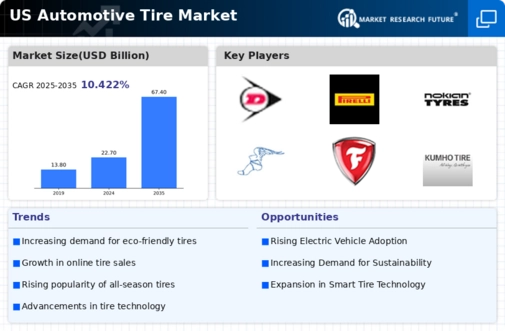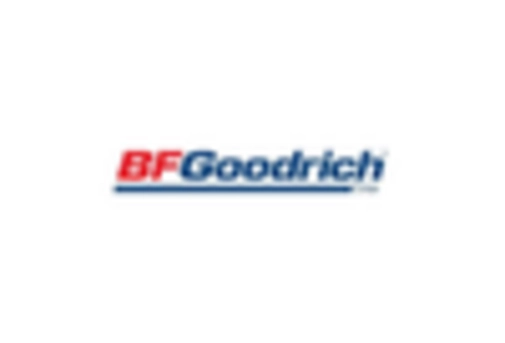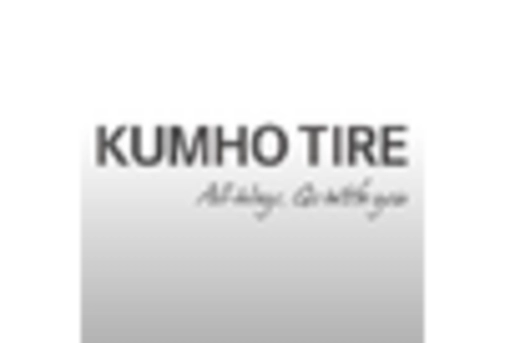The US Automotive Tire Market is characterized by a robust competitive landscape where various manufacturers strive to capture market share and cater to diverse consumer needs. The industry has witnessed significant growth driven by increasing vehicle sales, a heightened focus on safety and performance, and evolving consumer preferences towards sustainability and eco-friendly products.
Major players in the market are constantly innovating and enhancing their offerings to address challenges such as fluctuating raw material prices and demands for improved fuel efficiency. Competitive insights reveal a dynamic environment where companies are leveraging technological advancements, strategic partnerships, and extensive distribution networks to maintain their edge.
Additionally, understanding consumer trends, such as the shift toward online purchasing and preference for premium tires, has become essential for sustained competitiveness in this vibrant market.
Dunlop possesses a strong market presence within the US Automotive Tire Market, renowned for its commitment to quality and performance. The company is recognized for its innovative tire technologies that cater to both passenger and performance vehicles, offering products designed for enhanced grip, durability, and handling.
Dunlop has established a solid reputation among consumers who prioritize sports performance, as well as those seeking reliable all-season tires. The strength of Dunlop lies in its continuous investment in research and development, leading to the introduction of high-performance tires that resonate well with enthusiasts and everyday drivers alike.
The company has also built strong relationships with automotive OEMs, facilitating greater visibility and distribution within the market, thereby reinforcing its competitive advantage.
Pirelli holds a significant position in the US Automotive Tire Market, particularly noted for its specialty tires that cater to high-end vehicles and performance applications. The company's range of products includes ultra-high-performance tires, touring tires, and tires tailored for various weather conditions, aligning with the growing consumer demand for versatility and excellence.
Pirelli’s market presence is fortified through strategic partnerships with luxury automakers, enabling its tires to be original equipment on premium vehicles. The strength of Pirelli lies in its distinct focus on innovation, sustainability, and technology-driven performance, underpinned by mergers and acquisitions that have expanded its capabilities and product offerings in the US.
With an emphasis on delivering cutting-edge design and superior traction, Pirelli continues to enhance its brand appeal and market positioning through a commitment to excellence, which resonates deeply with the performance-driven segment of the automotive market.





















Leave a Comment